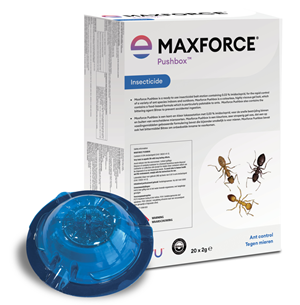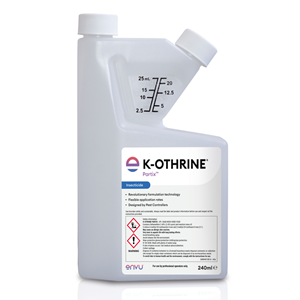Summer: Peak Pests
Summer brings sunshine, ice-lollies and…pests. Whether there are flies in the kitchen, ants in the conservatory or wasps at the BBQ, they are unwanted and uninvited guests.
In this article, we find out what drives these annoying creatures into our spaces and what we can do about it.
Ants – behaviour and control
While there are over 50 species of ant found in the UK, the most common is Lasius niger, or black/garden ant. Ant communities are led by the queen but it’s the workers, that we’re likely to see as they search for food. The males are only produced to mate with the queen, after which they usually die.
When worker ants leave the nest to forage, they communicate with each other through chemical signals. When a worker successfully finds food, they leave a trail of pheromones on their return to the nest. As more workers follow the trail the pheromones get stronger creating a positive feedback loop.
In their natural environment, ants play valuable roles in the ecosystem both as predators and as nutrient recyclers.
While ants do not go dormant in winter, they are more troublesome in summer as their activity increases with rising temperatures.
As well as removing food sources and sealing the cracks that ants are using to enter the building, these pests can be effectively controlled using insecticidal bait such as Maxforce Pushbox.
Flies – behaviour and control
The common housefly, or Musca domestica, is the most common species of fly found making a nuisance of itself in buildings.
In nature, flies are underappreciated pollinators and contribute to the decomposition and breakdown of nutrients, but they also spread intestinal worms and diseases such as dysentery, gastroenteritis, typhoid, cholera and tuberculosis.
Flies consume food by liquefying it with the digestive juices and stomach contents they regurgitate. They draw up the resulting ‘liquid’ with their suctorial mouthparts.
In temperate conditions, up to 12 generations of flies may breed in just one season and it only takes 48 hours of being an adult for the female to start laying eggs. She’ll lay between 400 and 750 in her lifetime.
The common housefly doesn't die off in the winter but tends to continuously reproduce in dry, warm environments.
Flies are attracted to food sources in our buildings. Storing refuse securely, removing it regularly and properly, as well as keeping surfaces free from attractants is an important step in the control of flies.
Maggot traps and insecticides are valuable tools too. When considering insecticides choose those that reduce the active substance levels in the environment, are long lasting and highly effective. K-Othrine Partix, for example, uses about 50% less active substance, has bio availability for up to 12 weeks and has proven excellent performance, even on absorbent surfaces.
Wasps– behaviour and control
There are over 7,000 species of wasp in the UK but less than 10 are the social, yellow wasps that cause trouble by building nests in buildings and stinging people.
The majority of wasps are parasitoids, laying their eggs on or in their prey. The larvae then hatch and consume their host. As such, parasitoid wasps are beneficial insects for farmers.
The social wasps, or yellow jackets, are also beneficial insects. Generally, they are apex predators and during the summer, they pollinate plants as they search for prey.
Adult social wasps actually only feed on sugars. They take the insects they catch back to the nest for their larvae to eat. It’s estimated that in the UK, wasp larvae consume 14 million kilograms of insect prey each year.
Before autumn, the colony produce a new queen. The young queens leave their nest in autumn, mate, and hibernate through the winter before building a new nest in the following spring. The rest of their colony die in autumn or early winter.
Young queens are attracted to our buildings for the shelter they offer, but with their potential to sting when threatened, the proximity of a wasp nest to people is undesirable.
Preventing wasps access to buildings is often an effective strategy but where that’s not practical, there are insecticidal treatments such as K-Othrine Partix.
Summary
We have accidentally created ideal areas of refuge for pests. Buildings are warmer, dryer and safer than the outside world and often harbour food sources.
Preventing access is the first step in controlling these unwanted insects. There are also a range of solutions that are highly effective. K-Othrine Partix, for example, is proven to offer excellent, long-lasting control of wasps and flies, while Maxforce Pushbox is highly effective at killing ants.
Credits: Thanks go to Keir Flowerdew and Hannah Jenkins from Harper Adams University for their knowledge and input into this article.


